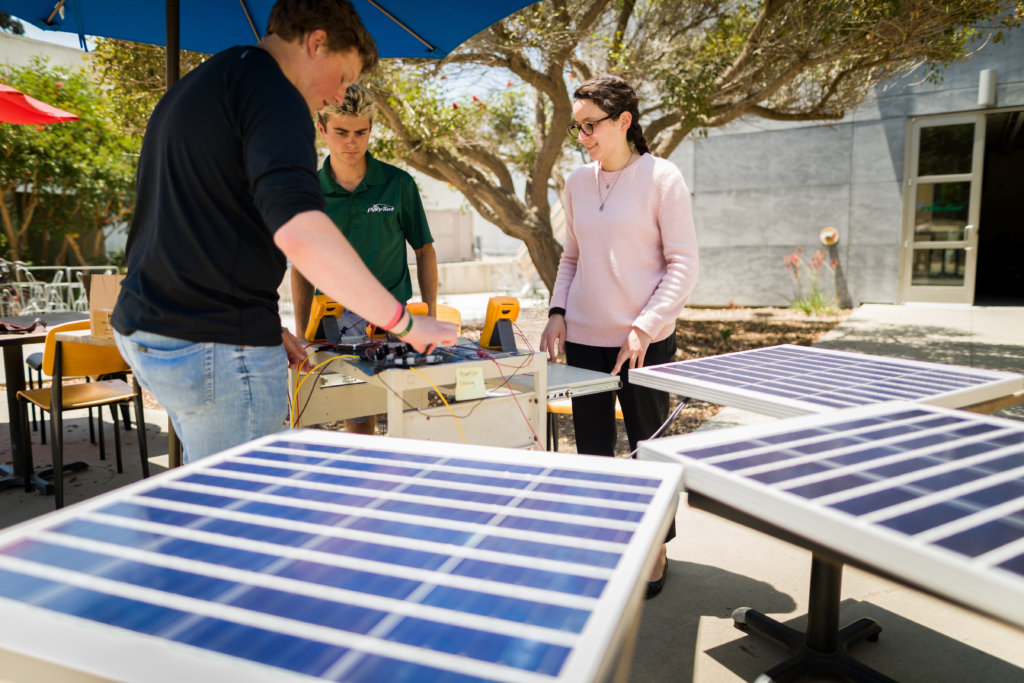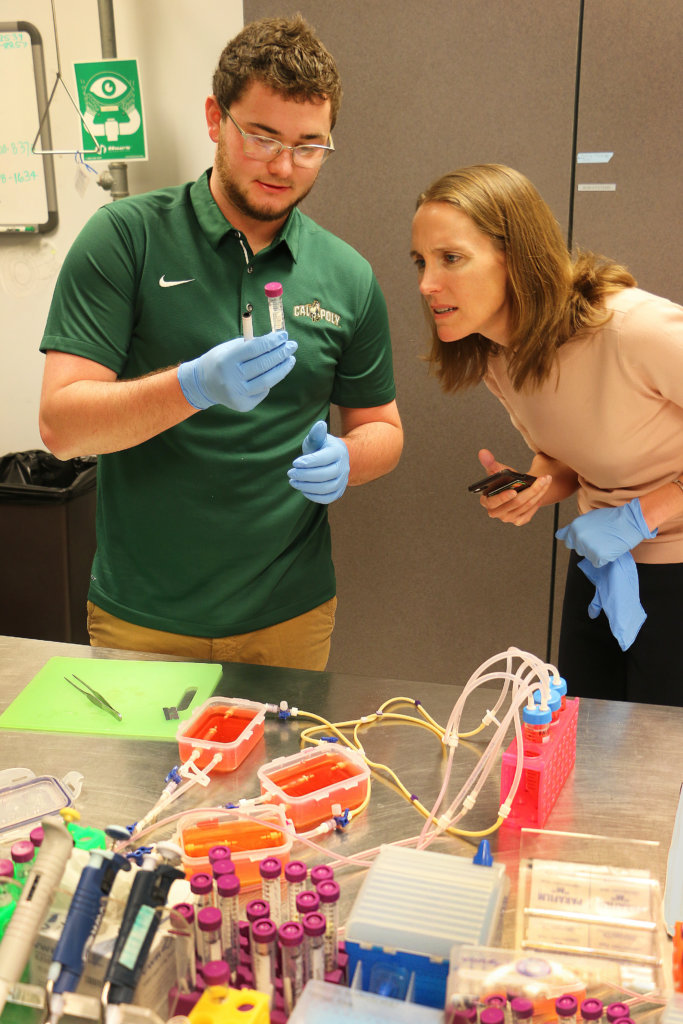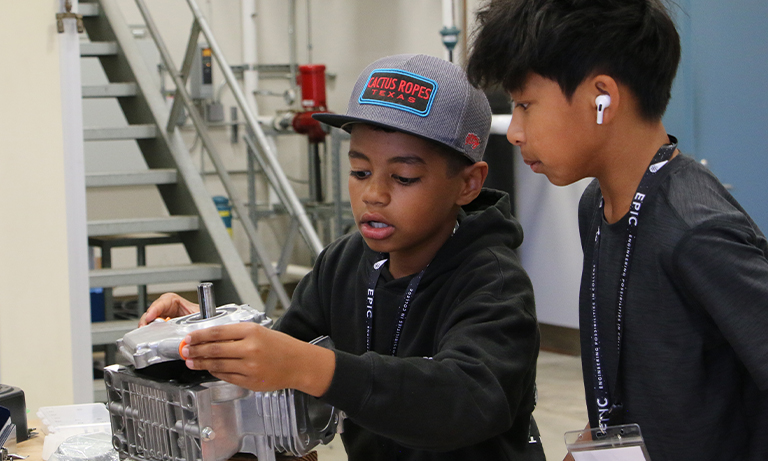NSF Grant Specifically Looks to Encourage Women of Color to Pursue Engineering Education

With a $1.25 million grant from the National Science Foundation (NSF), Cal Poly has joined a consortium of CSU schools that will work to improve gender parity for engineering faculty and add more women of color to the field.
“This grant presents an opportunity to continue to advance the important work happening on many campuses and in industry to improve gender parity and create more opportunities for women, particularly underrepresented women,” said Cynthia Jackson-Elmoore, Cal Poly’s provost and executive vice president for academic affairs, who will serve as the grant’s principal investigator at Cal Poly. “I am grateful to everyone on campus and across the CSU who are engaged with this and related work. I am looking forward to our partnership throughout this process and beyond.”
The initiative, named the Kindling Inter-University Networks for Diverse (KIND) Engineering Faculty Advancement in the California State University System, is led by Fresno State and includes partner campuses San Jose State, CSU Los Angeles and Cal Poly. The KIND program will entail collecting and analyzing data about existing female engineering faculty while also establishing a system-wide mentoring and peer support network to foster retention and recruitment.
In 2019, only 17 percent of tenure/tenure-track faculty in U.S. colleges of engineering were women, according to the American Society for Engineering Education. That percentage is significantly lower for Black and Latina women.
While many studies have shown that a systemic review of recruitment and retention practices combined with strategic interventions can positively impact gender disparity, it has never been tested on a scale as big as the CSU system.
“We know there are many systemic and cultural factors that impact career progression for engineering faculty, and that some differentially impact women faculty, and particularly women of color,” said Amy S. Fleischer, dean of Cal Poly’s College of Engineering, who will co-chair a cross-campus Advisory Board. “With this grant, we are going to examine those factors and take actions that will ultimately benefit the entire field of engineering.”
As in many fields, women who teach engineering tend to be paid less and promoted less frequently than men. The data collection for KIND will include information about advancement.
“We’re going to look at how women progressed through the faculty ranks – how they went from assistant to associate to full professor – and how much time it takes and whether they don’t get promoted compared to men,” said Eric Mehiel, the College of Engineering’s associate dean for diversity and student success, who will serve as the engineering faculty liaison for Cal Poly on the grant. “And then we’ll use that information to think about what kinds of policies we have and what kinds of support we have for faculty to have them be promoted and successful in an equitable way compared to men.”

Mehiel, who was already working on a similar initiative involving the broader STEM teaching field, said women’s careers are hindered by a variety of factors, including family obligations.
“If they’re the caretaker, and they have to take time off, that puts them behind their male colleagues in terms of their career and their advancement,” he said. “Within faculty, women tend to be assigned or volunteer for more service work as opposed to research, and universities often consider research more over service for promotion.”
The mentoring program aims to encourage women to stay in the field by offering peer support.
“I think having someone to talk to that has likely been in a similar situation is an important step toward understanding you aren’t alone in the process,” said Kira Abercomby, an aerospace engineering professor, who will work with fellow faculty member Liz Thompson to mentor female-identifying faculty and host workshops. “It is equally as important to have mentors that aren’t of the same gender or race but are advocates for us.”
Diversity is beneficial to engineering because it results in more ideas, Abercromby said.
“If we all think the same, nothing novel would ever come out of the field,” she said. “It takes just one different thought and the conversation about that thought to push new boundaries.”
A more diverse faculty, she added, could also help encourage more underrepresented students to come to Cal Poly.
“It won’t seem like they’re the only ones trying to make it in the field,” she said. “In addition, the more diversity we show at the university level, the more normal that will be when our students get to industry.”
While the grant originated with three faculty members from Fresno State, the benefits could involve up to 11 other CSU campuses with engineering programs.
“This grant is significant in how it will transform our approach to supporting women professors in engineering,” said Dr. Saúl Jiménez-Sandoval, president of Fresno State. “Through identifying the main challenging issues, we will strengthen opportunities and implement a holistic approach to encourage female students to pursue the field. Consequently, by expanding the scope of the grant beyond just one campus, we will leverage the combined power of the greater CSU system.”


